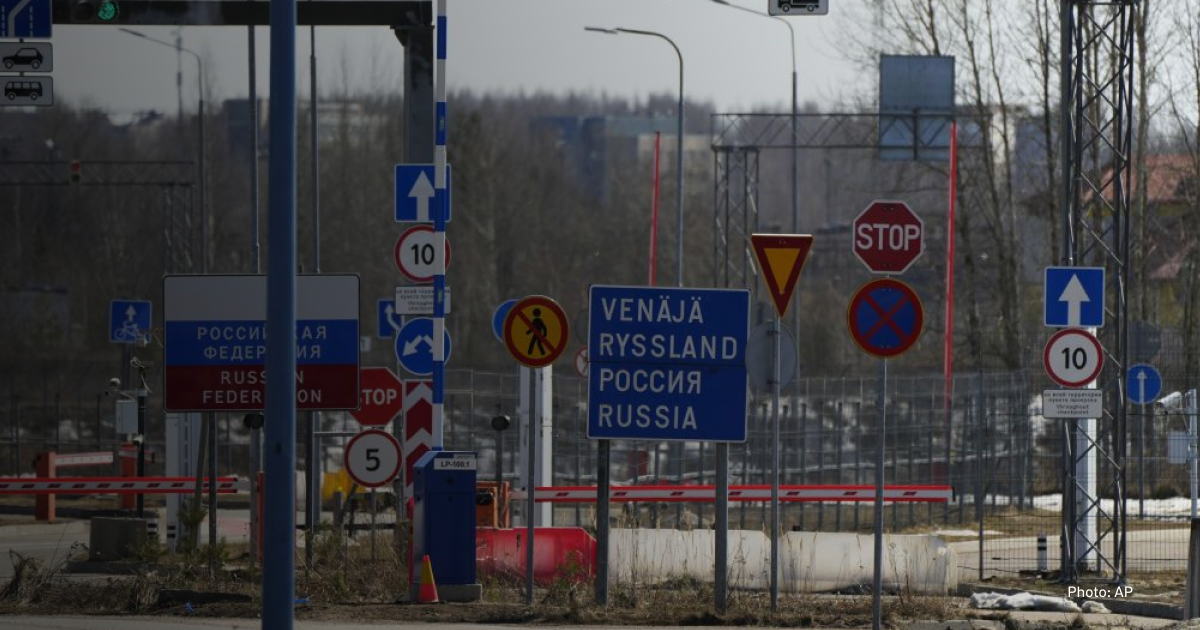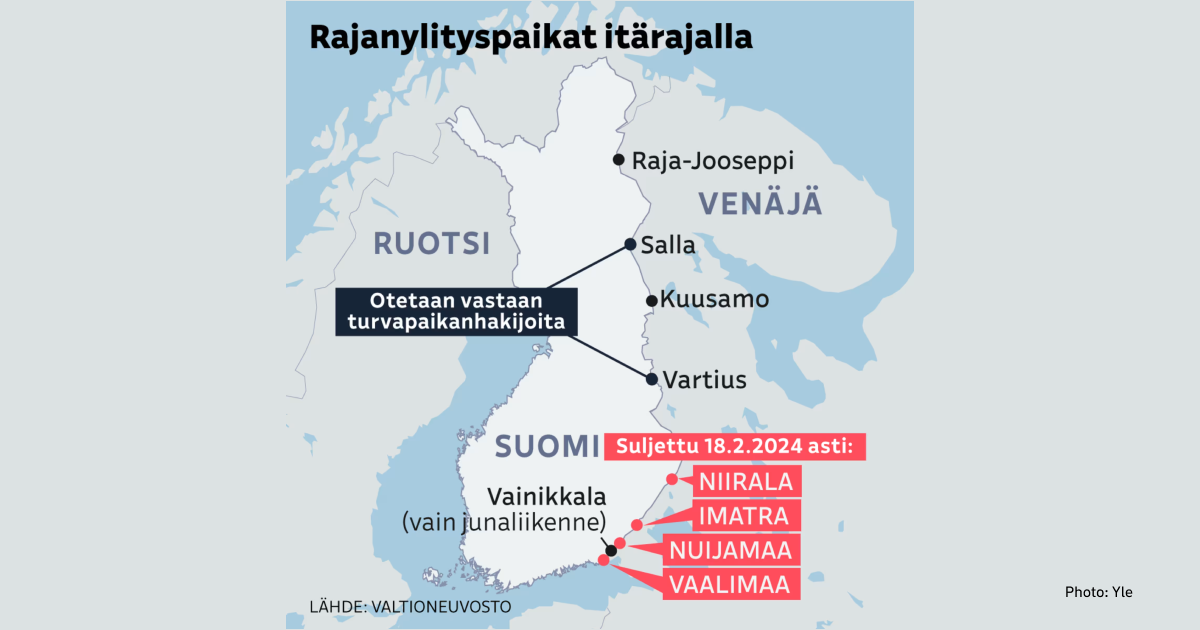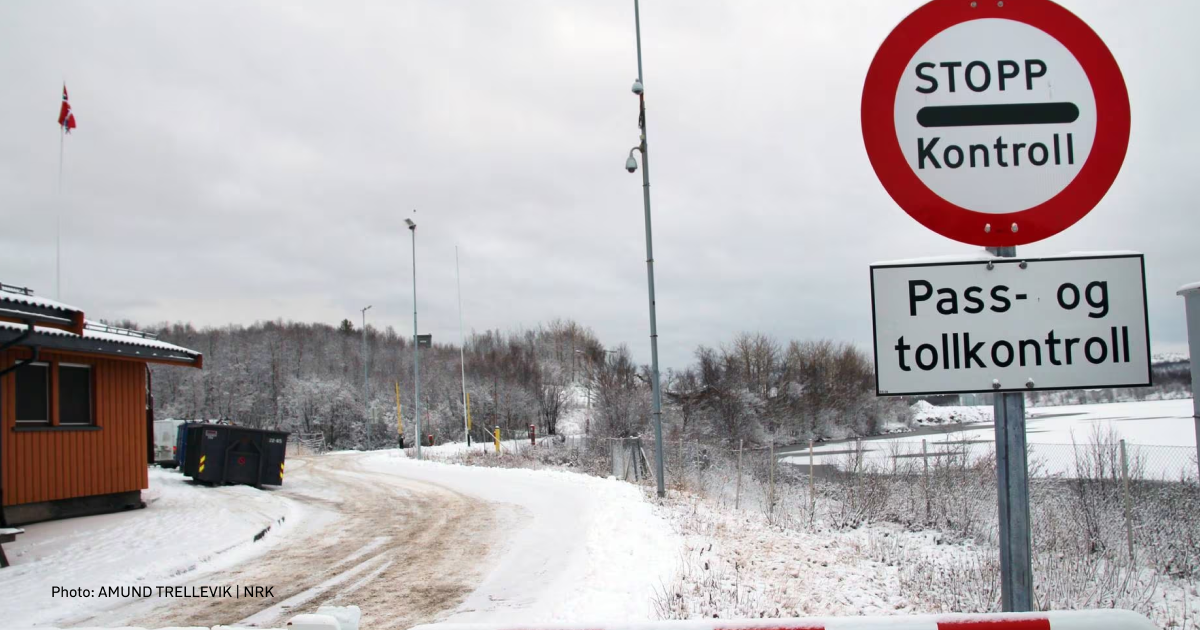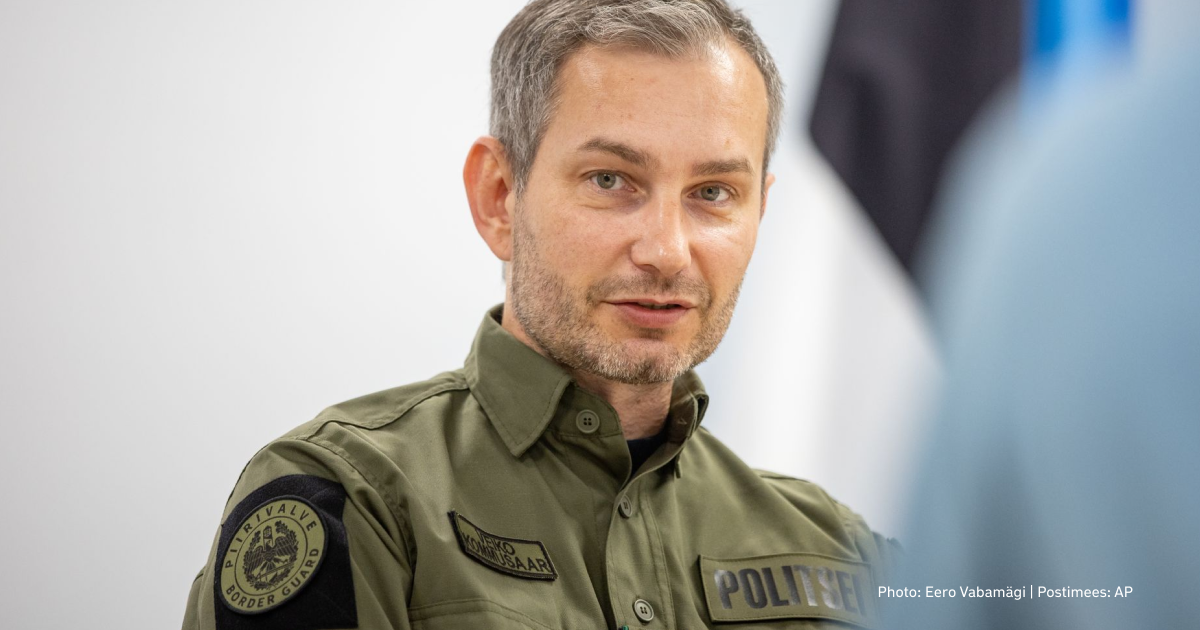Finland closes checkpoints on the border with Russia. Norway and Estonia are ready to do the same

What happened?
On the night of November 18, Finland closed four of its eight border crossings with Russia. These are the Vaalimaa, Nuijamaa, Imatra and Niirala border crossings along the eastern border of Finland. They will be closed until February 18, 2024, but the ban may be extended.
The reason was a surge in migration. According to the State Border Guard Service, on November 17, 163 asylum seekers arrived at the border crossing points. A week later, there were around 300.
Most of them do not have the necessary documents. Among them are citizens of Iraq, Syria, Yemen and Somalia. These people were using Russia as a transit country on their way to the European Union, although Russia had previously refused to allow them to enter.
On November 9, the State Border Guard Service decided not to allow Russian cyclists to enter the country to prevent illegal migrants from crossing the border.

Finland does not want to be a transit country
The Finnish government has previously restricted the entry of Russians into its country.
For example, on August 31, 2022, the EU terminated an agreement with Russia that made it easier for Russians to obtain Schengen visas. However, a complete ban on issuing documents was not on the cards, as there was no unanimity among the countries on this issue.
Earlier, five countries — Poland, Finland, Estonia, Latvia and Lithuania — had declared that they would take separate measures to reduce the number of Russians admitted to their territory if a joint decision could not be reached.
In September, the country appealed to the European Commission to issue joint recommendations to all Schengen countries to cancel or revoke visas issued to Russian citizens.
At the time, the Finnish government suggested that Schengen countries blocking the entry of Russian citizens at their borders should cancel the visa of a Russian citizen or ban him/her from entering the Schengen area, in accordance with the usual Schengen practice.

The Ministry of Foreign Affairs said that if a Russian citizen's visa was cancelled by one country or he was subject to a visible entry ban in the Schengen Information System, other member states could also ban him from entering the Schengen area. This would prevent Russians from trying to enter the Schengen area by other means.
At the time, Finnish Foreign Minister Pekka Haavisto said that the country did not want to be a "transit country" and would take national measures to prevent Russian citizens from entering the country.
We have decided to start preparing a national decision on how we can limit or prevent this tourist traffic altogether, and this national decision may include new legislation that will be adopted very quickly or with an interpretation of the existing rules,
Haavisto said at the time.
In the end, the office said it would make a fundamental decision to impose "significant restrictions" on the entry of Russian citizens and issuing visas. It was assumed that only certain groups of people would be able to enter the country, including relatives visiting people living in Finland and those studying or working there. On September 30, 2022, Finland closed its border to Russian tourists with Schengen visas.
In April, in the midst of the war in Ukraine and to avoid a migration crisis, Finland began building the first section of the fence on the border with Russia.
Norway and Estonia are preparing to do the same
The Norwegian government says it is "closely monitoring" the situation on the border between Russia and Finland and is prepared to close the only checkpoint on the Norwegian-Russian border at Storskog.
According to Emilie Enger Mehl, the Norwegian Minister of Justice and Public Security, Norway has not experienced the same migrant flows as Finland.
The Estonian government may close border checkpoints "partially or completely".
The head of the country's Border Guard Service, Veiko Kommusaar, reported that on November 16 alone, eight Somali citizens without visas tried to enter Estonia from Russia in an hour and a half, passing through Russian border guards.

Estonian Minister of Interior Affairs Lauri Läänemets suggested that they may have been assisted by the Russian authorities.
In case the border is closed, concrete blocks have already been brought to the bridge between Narva, Estonia, and Ivangorod, Russia.
EU reaction to Finland's decision
Finnish President Sauli Niinistö and German President Frank-Walter Steinmeier accused Russia of deliberately helping refugees cross borders to destabilise Western countries.
The head of the European Commission, Ursula von der Leyen, also called Russia's use of migrants "shameful". She wrote that she supports Finland's measures.
EU spokesperson Christian Wigand said that the European Union has recorded an increase in the number of cases of illegal asylum seekers arriving in Finland from Russia.
He added that EU member states have an obligation to protect their external borders in full compliance with fundamental rights. The EU is currently in contact with the Finnish authorities and border guards.
How did the Russians react?
Russia's press secretary Dmitry Peskov called Finland's path of confrontation with Russia "a big mistake".
Meanwhile, on November 18, about 100 Russians gathered near the Finnish parliament building to protest against the "border closure".
They wanted to open a dialogue with the Finnish government and said that they condemned Russia's practice of using refugees as a weapon in international politics.
One protester believes that "an iron curtain will drop between the countries".
Migrants are a tactic of the Russian Federation
The Finnish Institute of International Affairs believes that the actions to send migrants across the border are the most striking example of Russia's tactics of intimidation of neighbouring countries.
Now Russia is once again trying to put pressure on Finland by using migrants, using them as a weapon. This is something that Russia has already used against Norway and Finland,
says Sinikukka Saari, research director at the Institute of International Affairs.
She highlighted three methods of hybrid influence of the Russian Federation on neighbouring countries:
- sending asylum seekers across the border;
- labour migration;
- damage to infrastructure and sabotage by Russia.
According to Sinikukka Saari, asylum seekers have been arriving in Norway and Finland from Russia since the end of 2015.
In December 2015, dozens of migrants from the Middle East got stuck at the Russian-Norwegian border. Independent wrote that at the time, Russia was recognised as a safe country, so migrants who arrived in Russia had to apply for refugee status there instead of going to Norway.
Then, the Norwegian authorities started sending migrants with residence permits in Russia back to Russia without processing their asylum applications.
In turn, Russian security forces also detain migrants and send them back to Norway.
The Norwegian government claimed that it was only sending back those migrants who had permission to stay in Russia, so Russia was obliged to take them back.
The Norwegian government also asked Russia why it was sending so many refugees to Norway.
According to Reuters, around 1,000 asylum seekers entered Finland from Russia in the first two months of 2016. In 2015, the total number was around 700.
This came against the backdrop of the migrant crisis facing EU countries. The Finnish government said at the time that many of them were Afghans or Indians and had not fled war or persecution. Some had lived in Russia for a long time.
In addition to the route through Russia, migrants were also arriving in the European Union via the Mediterranean. At the time, Vladimir Putin claimed that he had asked Russian security forces to step up surveillance of refugee flows across the border with Finland.
However, researchers at the Finnish Institute of International Affairs accused Russia of using the migrants against Finland and the European Union.

Migrants as a tool of political pressure on the EU by Belarus
Sinikukka Saari adds that Belarus is using the same tactics on its western borders.
In 2021, the Belarusian authorities, with the support of the Russian Federation, organised migrant smuggling routes to the borders with EU countries, including Poland and Lithuania.
This was Belarus's response to EU sanctions imposed over the fraudulent presidential elections in 2020 and the repression of the opposition. Illegal migration has thus become a tool of political pressure for the authorities in Minsk.
According to an investigation by Belsat TV, the Belarusian authorities' profits from migrants amount to at least $12 million.
During their stay at the border, the migrants repeatedly clashed with Polish border guards.
The migrants used tactics with the help of the Belarusian police: while some threw stones at the Polish police, the Belarusian police blinded them with lasers and stroboscopes, while others tried to cross the border in another place.
There were also attempts to cross the border between Belarus and Poland in 2022 and 2023. The last attempt of migrants to cross the Polish border from Belarus was on September 24. The Polish military managed to stop the attempt.


